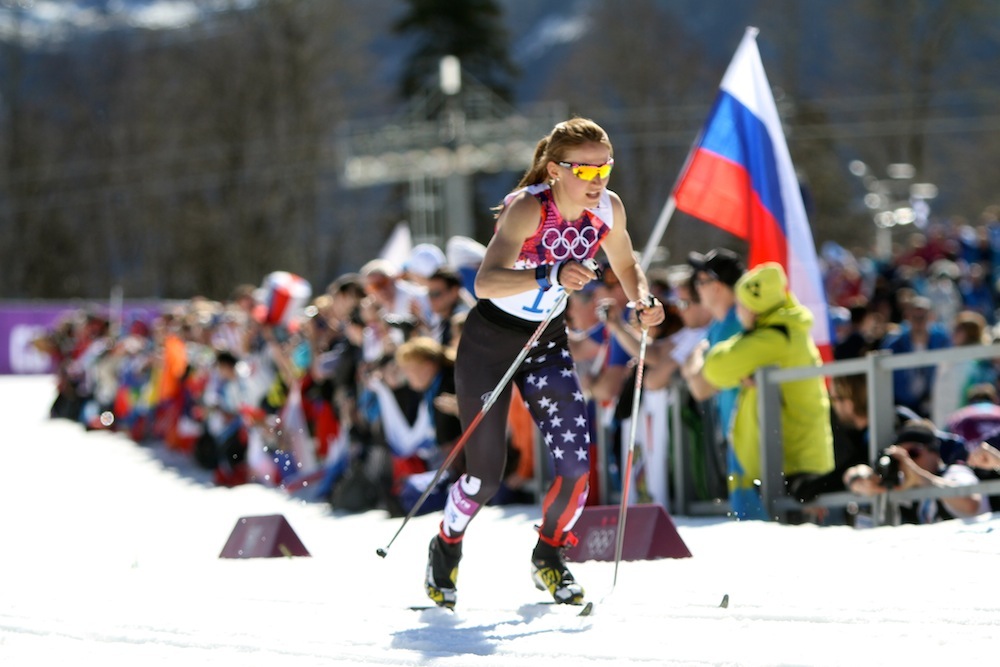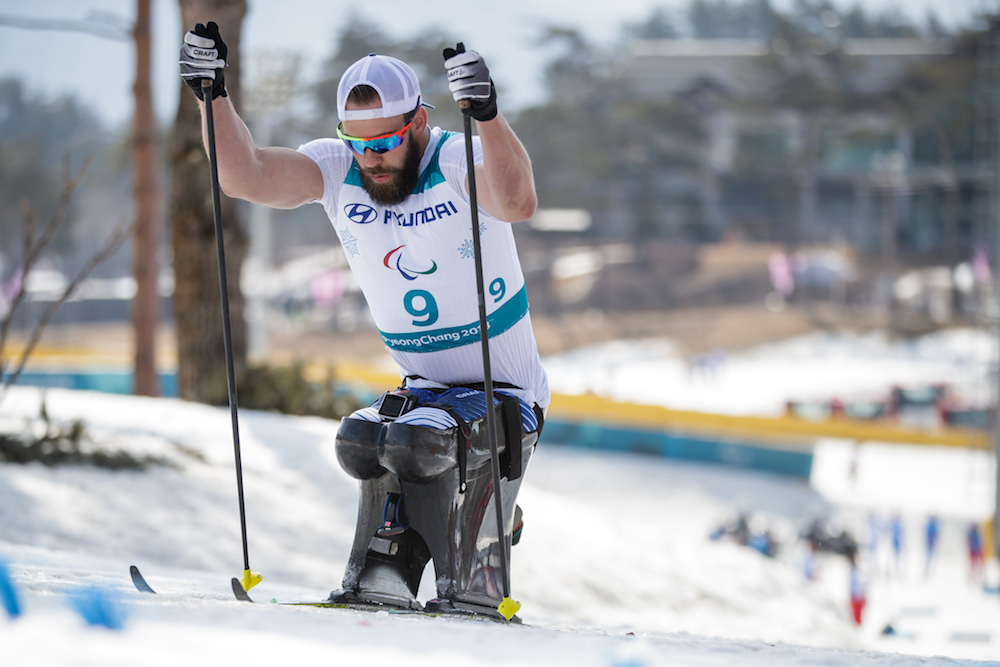
With an incredibly elaborate hoax from the Chinese now in full swing, winter athletes from all over the world continue to struggle with our planet’s changing climate. Snow sports have been particularly hard hit, as rising temperatures and increasingly erratic weather patterns have resulted in less predictable snowfall, mid-winter rain storms, rapidly abating trail conditions, and thusly greatly shortened training and racing seasons. This fallout from these changing climactic conditions is far-reaching and appears to only be worsening.

One industry sector that has been forced to drastically change its business model is that of nordic clothing. While long-sleeve tops and full-length race suits have been de rigueur for literally decades, warming temperatures have forced all of the nordic clothing companies to rethink and adjust their business models and product lines in what is proving to be a very hostile environment.
“We now live in constant fear,” said one CEO, who only agreed to speak anonymously, out of fear of repercussions from the now notoriously vindictive EPA. “I’ve seen Scott Pruitt strangle babies who supported the notion of climate change with his bare hands. I am convinced that all of us in the outdoor industry are being watched, as we’ve had employees making only passing comments about how warm it is in Minnesota in January, but then boom — they suddenly disappear. I’ve even heard that they are in the process of rebranding the organization into the ‘Environmental Destruction Agency.’ This is equally scary, but at least it is a more accurate name.”
He went on, “Seemingly all intelligent scientists agree that the climate is warming and that this dangerous change is due to human activity, but since the EPA now seems to hate scientists, we are really out there without a map,” he continued. “Yes, we do still produce long-sleeve race tops, but due to the new temperatures that we’ve been seeing much more regularly recently as races, we are about to release a whole new array of race-oriented gear. The newly redesigned men’s line features sleeveless shirts, muscle T’s and even a collection of temporary tattoos with each team’s full line of sponsor logos, therein allowing athletes to ski shirtless, yet still appropriately represent their sponsors. The women’s line tops are almost exclusively tank tops, half-shirts and sports bras, and the traditional full length race pants have been replaced by Daisy Duke-style short-shorts and bikini bottoms. This might sound a bit racy (no pun intended), but we’ve worked tirelessly to keep the garments classy. The climate is changing, so we realized that we needed to change as well. Believe me, none of us are happy about it, but it’s just where we are now in Trump’s America.”
From an athlete’s perspective, this change is welcome and much needed. “I’m all about representing my sponsors,” stated one top U.S. skier, “but I need to be able to race. This year in PyeongChang temperatures approached 40 degrees in one of my races and it’s wacky even think about attempting to race in those conditions with something on your arms. How the other 47 girls did that without issue is simply cuckoo for Cocoa Puffs. It was very confusing how warm it was, because there was snow on the ground, but yet the sun was out, which is like, totally yucky! Most of our wax techs are foreigners, so I didn’t know the exact temperature, as they use funny numbers, but I was just, like, super-duper sweaty Betty! JP [U.S. Cross Country wax technician] told me that it was +2 at the start and while I don’t know exactly what that means in American, I think it’s something like 75 degrees U.S.”

Noted U.S team physician, physiologist and psychologist Dr. Richard Fitzwell concurred. “It’s really an athlete-safety issue,” claimed Dr. Fitzwell. “A few of the athletes expressed concern for dehydration, heat stroke and possibly even uneven tan lines, the latter of which is potentially devastation to aspiring modeling careers. No one should be forced to endure the indignity of showing up for a Today Show segment with pale arms. That’s simply not what this country is all about.”
He continued, “Sure, all of our summer athletes competed very successfully in the Rio Olympics in temperatures approximately 50 degrees warmer [Fahrenheit], but bear in mind that they were almost universally in short sleeves. I believe that for some athletes, the physiologically optimal temperature to switch from long sleeves to short sleeves is somewhere around 35 or maybe 40 degrees. That’s in ‘U.S.’, too, as I have no idea what this is in French or Korean. Quite frankly, I have no idea how those temperature systems work. Or for that matter, if they even work at all. I mean come on, ‘Plus 2?’ What the hell does that even mean? That can’t be a real temperature.”
Dr. Fitzwell concluded, “I’m glad to hear that the clothing companies are looking at making changes in their products to accommodate these shifting race conditions, but for those smaller teams or individuals without the budget to buy all new clothing immediately, this should not be cause for concern, as current research indicates that most normal people will be fine in a traditional long-sleeve race suit up to about 60 degrees. It’s also worth noting that these long-sleeve suits offer that added benefit of abrasion protection should the athlete happen to take a fall, which is a real plus. If you were skiing around on a 35-degree day in a cut-off race top and took a spill, you’d look like a real idiot. In particular if you were the only one in short sleeves.”
These changes come at a cost, however, as several of the sleeves interviewed for this story are rightfully concerned about the economic impact of these changes and their potential lack of employment. One exasperated set of cut-off sleeves fretted, “I am considering suing to ensure that I be named to future Olympics teams, regardless of the temperature on race day, as I understand that this can be a very effective strategy for making the team. In fact, I’ve heard reports that this tactic can be so effective that you can actually displace outfits that finished ahead of you in selection criteria.”
Several attempts were made to reach U.S. Ski & Snowboard Chief of Sport Luke Bodensteiner, but he was alpine skiing at a luxury resort in Switzerland and unavailable for comment.
Jon "Fast Big Dog" Schafer
Fast Big Dog is a paradoxically gregarious yet reclusive, self-absorbed mystic and world traveler. In addition to his calling to right the wrongs in the ski fashion and gear world, he also brings his style, wit and devilish charm to the Steamboat Springs Winter Sports Club as the Nordic High Performance Director and Worldwide Director of Morale and Awesomeness. Savor these articles while you can, as his Great Dane puppy may burn down his house at any moment, possibly making this his last transmission.



